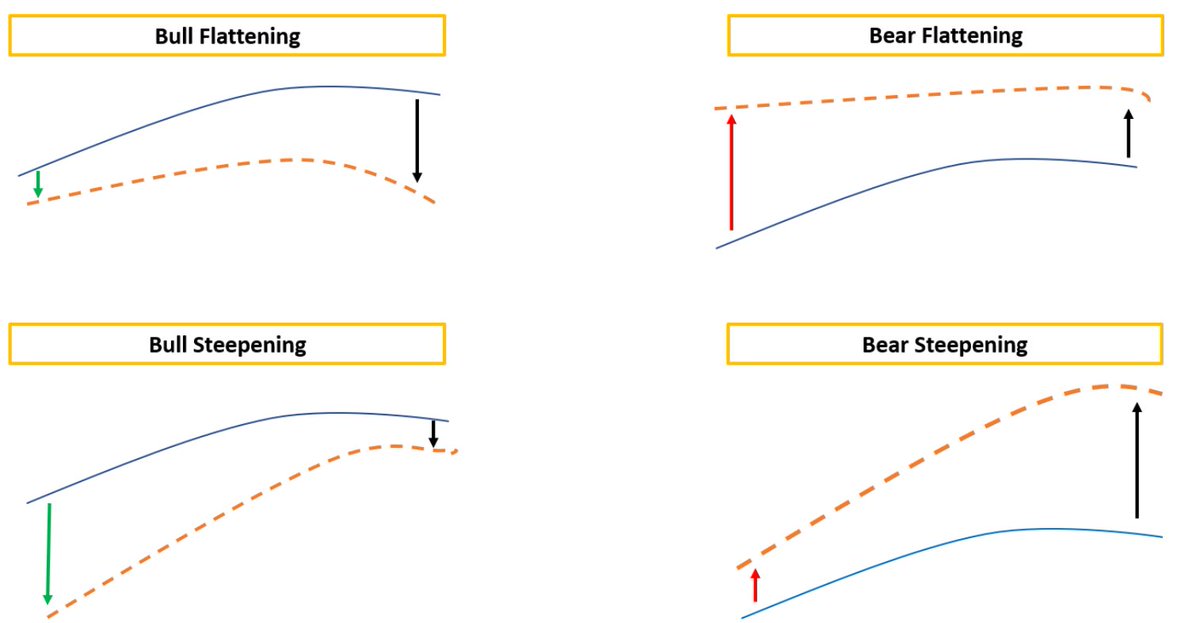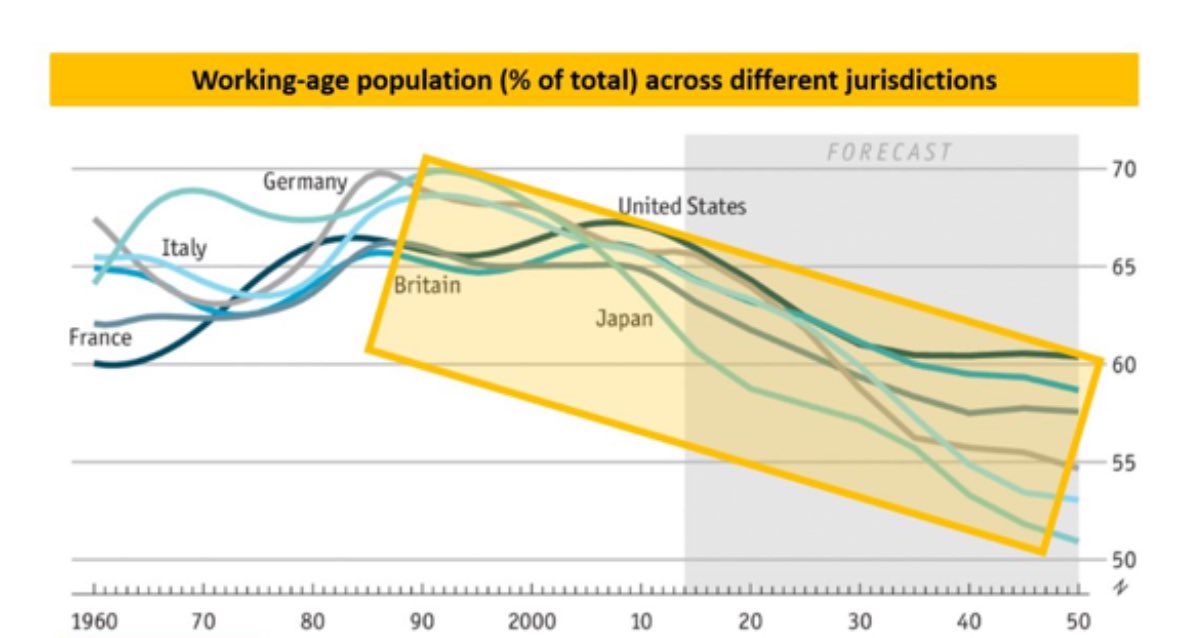Yield curve dynamics are crucial to understand if you want to become a better macro investor.
And there is a lot going on under the surface now.
Thread.
1/
And there is a lot going on under the surface now.
Thread.
1/
Yield curve dynamics represent a crucial macro variable, as they inform us on today’s borrowing conditions and on the market future expectations for growth and inflation.
2/
2/

An inverted yield curve often leads towards a recession because it chokes real-economy agents off with tight credit conditions (high front-end yields) which are reflected in weak future growth and inflation expectations (lower long-dated yields).
3/
3/
A steep yield curve instead signals accessible borrowing costs (low front-end yields) feeding into expectations for solid growth and inflation down the road (high long-dated yields).
4/
4/
Rapid changes in the shape of the yield curve at different stages of the cycle are a key macro variable to understand and incorporate in your portfolio allocation process.
So, let's explore the 4 main yield curve regimes.
5/
So, let's explore the 4 main yield curve regimes.
5/

Bull Flattening = lower front-end yields, flatter curves.
Think of 2016: Fed Funds already basically at 0% and weak global growth.
Yields stay put at the front-end and could move lower only at the long-end, hence bull-flattening the curve.
6/
Think of 2016: Fed Funds already basically at 0% and weak global growth.
Yields stay put at the front-end and could move lower only at the long-end, hence bull-flattening the curve.
6/

Bull Steepening = lower front-end yields, steeper curves.
Late 2020, early 2021: the Fed was keeping rates pinned at 0% and stimulating via QE but the economy was flooded with fiscal stimulus and ready for reopening.
7/
Late 2020, early 2021: the Fed was keeping rates pinned at 0% and stimulating via QE but the economy was flooded with fiscal stimulus and ready for reopening.
7/

This tends to happen ahead of recessions: short-dated bonds start to price in meaningful Fed cuts in response to weak economic conditions, and they rally harder than long-end bonds.
A transition from a flat curve to a bull steepening is very troublesome for markets.
8/
A transition from a flat curve to a bull steepening is very troublesome for markets.
8/
Bear Flattening = higher front-end yields, flatter curves.
2022 was the bear flattening year: Powell raised rates aggressively to fight inflation, but he ended up choking the economy off.
9/
2022 was the bear flattening year: Powell raised rates aggressively to fight inflation, but he ended up choking the economy off.
9/

Bear Steepening = higher front-end yields, steeper curves.
This happened in Q3-23, leading long-end yields markedly higher as investors demanded more term premium to hold long duration bonds.
Unless growth is exceptionally strong, bear steepening are hard on equities.
10/
This happened in Q3-23, leading long-end yields markedly higher as investors demanded more term premium to hold long duration bonds.
Unless growth is exceptionally strong, bear steepening are hard on equities.
10/

Recently, the curve has been bear flattening.
Yes, markets have priced away a large number of cuts until early 2025 but they are assuming the Fed will be forced to deliver some of them later anyway.
For example: the inversion between March 2025 and March 2026 just reached new lows.
11/
Yes, markets have priced away a large number of cuts until early 2025 but they are assuming the Fed will be forced to deliver some of them later anyway.
For example: the inversion between March 2025 and March 2026 just reached new lows.
11/

The hawkish YTD repricing in bond markets has been contained by reshuffling some cuts down the curve.
This explains why such a repricing in bond markets doesn’t have strong repercussions on stock markets.
12/
This explains why such a repricing in bond markets doesn’t have strong repercussions on stock markets.
12/
Rapid changes in the shape of the yield curve when growth is at turning points are a key variable to consider for a successful asset allocation process.
Hence, it's important to keep watching the changes in the shape of the yield curve.
13/
Hence, it's important to keep watching the changes in the shape of the yield curve.
13/
Before you leave: I am working to the launch of my new macro fund!
If you are interested to discuss a potential allocation, reach out to me and I'll share more info.
Enjoy your weekend!
14/14
If you are interested to discuss a potential allocation, reach out to me and I'll share more info.
Enjoy your weekend!
14/14
• • •
Missing some Tweet in this thread? You can try to
force a refresh









